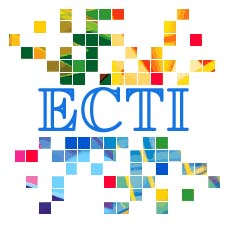Estimating the Harmonic Contributions of Utility and Costumer in a distorted power system
Main Article Content
Abstract
This paper presents an improved method for determining the contribution of harmonic distortion generated by utility and customer at the Point of Common Coupling (PCC) in a distorted power system. For this purpose, first the magnitude and phase of voltage and current at the PCC in each frequency are estimated by adaptive Kalman filter. Then the parameters of Thevenin equivalent circuits of load and utility sides are estimated using the recursive least squares technique based on singular value decomposition (SVD). Finally, the contribution of utility and customer in harmonic distortion of the 3-phase voltage waveforms has been calculated by three approaches. A case study has been made to verify the accuracy of the proposed method. Also, the presented method has been used in a 13-bus IEEE standard distribution system. Presented simulation results show that the proposed method can accurately determine the harmonic contributions of utility and customer for measurements made at the PCC.
Article Details
This journal provides immediate open access to its content on the principle that making research freely available to the public supports a greater global exchange of knowledge.
- Creative Commons Copyright License
The journal allows readers to download and share all published articles as long as they properly cite such articles; however, they cannot change them or use them commercially. This is classified as CC BY-NC-ND for the creative commons license.
- Retention of Copyright and Publishing Rights
The journal allows the authors of the published articles to hold copyrights and publishing rights without restrictions.
References
[2] X. Wilsun and L. Yilu, “A method to determine customer harmonic contributions for incentivebased harmonic control applications,” Power Engineering Society Summer Meeting, IEEE, pp. 361–366, 1999.
[3] X. Wilsun and L. Yilu, “A method for determining customer and utility harmonic contributions at the point of common coupling,” IEEE Trans-actions on Power Delivery,vol. 15, pp. 804–811, 2000.
[4] C. Chaoying, et al., “Critical impedance method- a new detecting harmonic sources method in distribution systems,” IEEE Transactions on Power Delivery, vol. 19, pp. 288–297, 2004.
[5] N. Hamzah, et al., “Harmonic source location at the point of common coupling based on voltage magnitude,” TENCON 2004. 2004 IEEE Region 10 Conference, pp. 220–223, 2004.
[6] T. Pfajfar, et al., “Harmonic Contributions Evaluation with the Harmonic Current VectorMethod,” IEEE Transactions on Power De-livery, vol. 23, pp. 425–433, 2008.
[7] S. F. de Paula Silva and J. C. de Oliveira, “The sharing of responsibility between the supplier and the consumer for harmonic voltage distortion: A case study,” Electric Power Systems Re-search, vol. 78, pp. 1959–1964, 2008.
[8] Z. P. Du, et al., “Identification of harmonic sources of power systems using state estimation,” Generation, Transmission and Distribution, IEE Proceedings, vol.146, pp.7-12, 1999.
[9] G. D’Antona, et al., “State Estimation for the Localization of Harmonic Sources in Electric Distribution Systems,” IEEE Transactions on In-strumentation and Measurement, vol. 58, pp.1462-1470, 2009.
[10] A. Kumar, et al., “Determination of location of multiple harmonic sources in a power system,” International Journal of Electrical Power & En-ergy Systems, vol. 26, pp. 73–78, 2004.
[11] E. Gursoy, “Independent component analysis for harmonic source identification in electric power systems,” Phd Thesis in Drexel University, 2007.
[12] E. Oja and A. Hyvarinen, “Independent component analysis: algorithms and applications,” Neural Networks, vol. 13, pp. 411–430, 2000.
[13] D. Niebur, et al., “Independent Component Analysis Techniques for Power System Load Estimation,” Applied Mathematics for Restruc-tured Electric Power Systems, pp. 287–317, 2005.
[14] J.A. Rosendo Mac´ıas, A. G. Exp´osito, “self226 ECTI TRANSACTIONS ON ELECTRICAL ENG., ELECTRONICS, AND COMMUNICATIONS VOL.10, NO.2 August 2012 tuning of Kalman Filters for Harmonic Computation,” IEEE Trans. on Power Delivery, vol.21, no. 1, 2006.
[15] T.Lobos, T.Kozina and H.j.Koglin, “Power System Harmonic Estimation using linear least square method and SVD,” IEE Proc. Genera-tion, Transmission and Distribution, vol. 148, pp. 567–572, 2001.
[16] S.Osowski, “SVD technique for estimation of harmonic components in a power system, a statistical approach,” IEE Proc. Generation, Trans-mission and Distribution, vol. 141, pp. 471–479, 1994.
[17] H. Ma and A. A. Girgis, “Identification and tracking of harmonic sources in a power system using a Kalman filter,” IEEE Trans. on Power Delivery, vol.11, no. 3, July 1996.
[18] F. F. Costa, “Estimation of harmonics and interharmonics in electric systems,” Phd Thesis in Federal University of Campina Grande, Brazil, 2005.
[19] G. Fusco, A. Losi, and M. Russo, “Constrained least squares methods for parameter tracking of power system steady-state equivalent circuits,” IEEE Trans. on Power Delivery, vol.15, no. 3, pp. 1073–1080, 2000.
[20] T.Lobos, T.Kozina and H.j.Koglin, “Power System Harmonic Estimation using linear least square method and SVD,” IEE Proc. Genera-tion, Transmission and Distribution, vol. 148, pp.567–572, 2001.
[21] G. V. de Andrade Jr., S. R. Naidu, M. G. G. Neri, and E. G. da Costa, “Estimation of the utility’s and consumer’s contribution to harmonic distortion,” IMTC 2007, Warsaw, Poland, May 1-3, 2007.


